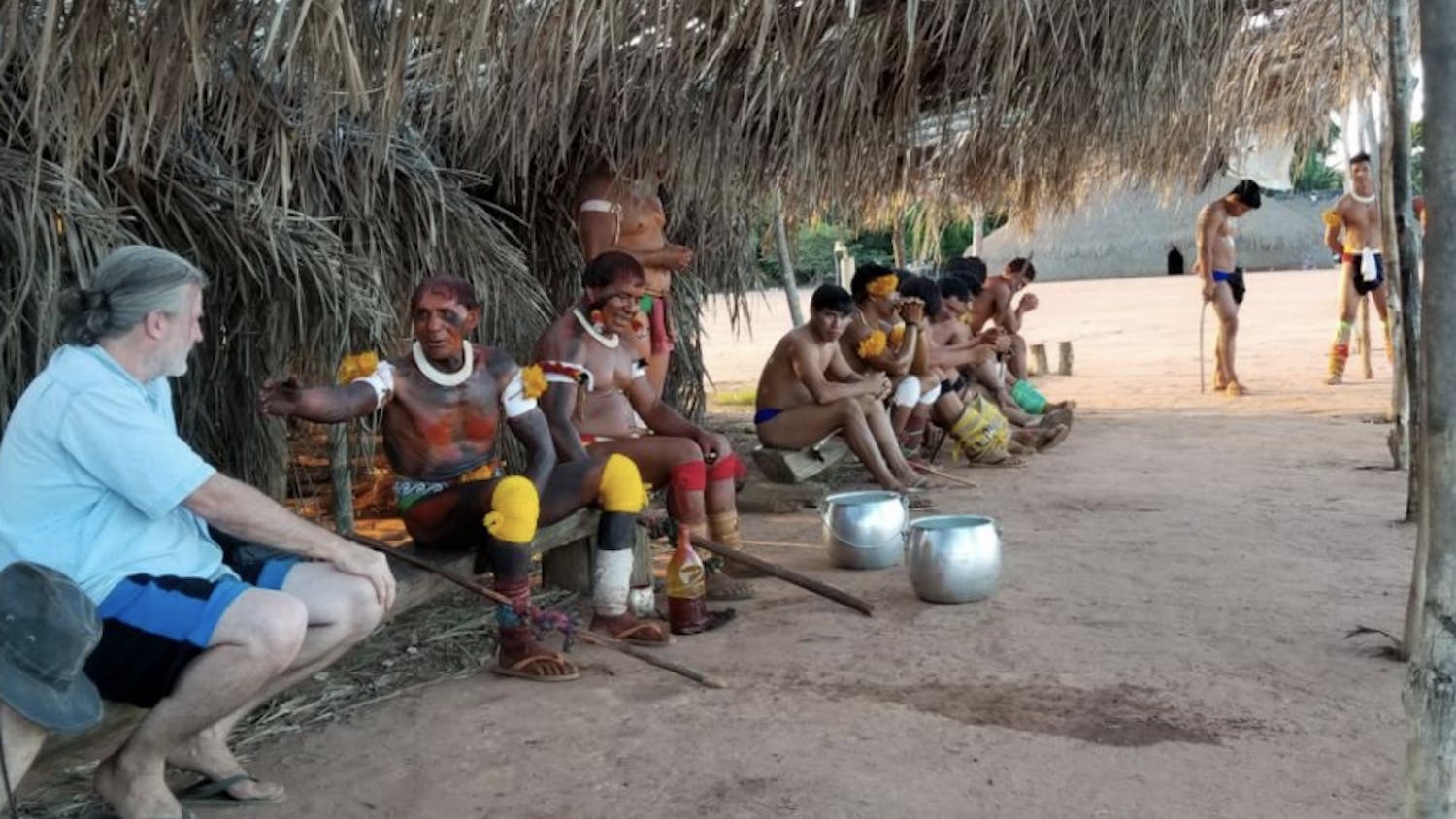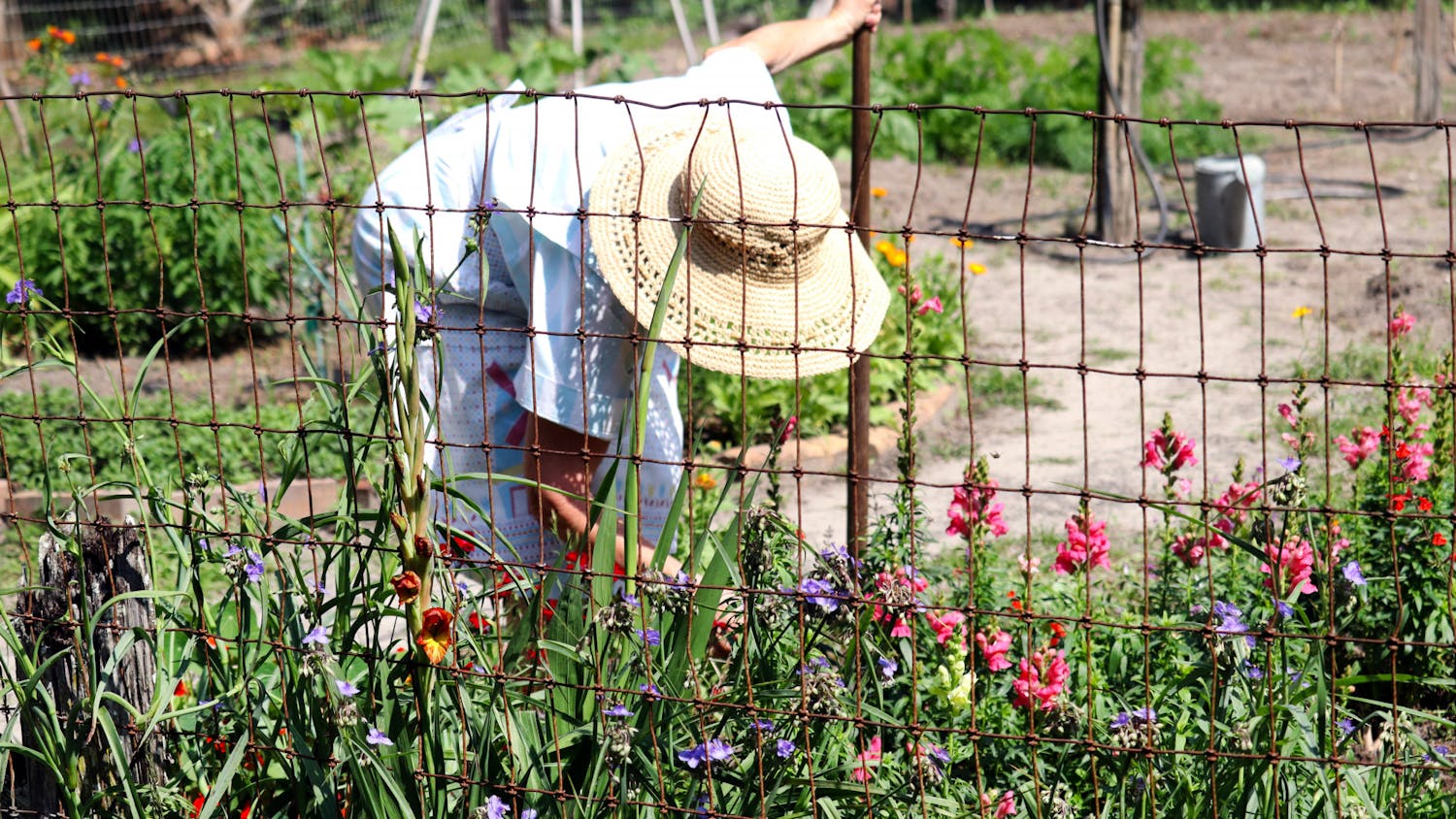UF’s first resident wasn’t a person, but a tree. Sprouting before the university was founded, a longleaf pine near Keene-Flint Hall has watched UF grow into what it is today. In April, the tree was declared dead.
The tree, which has been called both the Bicentennial Tree and the Anthropocene Tree, is estimated to have sprouted around the time the Declaration of Independence was signed, around 275 years old, according to UF forestry experts.
The most concrete marker of the tree’s age is a 1976 Alligator article, which reported that UF Forestry experts set out to find a tree as old as the Declaration of Independence to celebrate 200 years as an independent country. At the time, the article said the tree was estimated to be one of the only longleaf pines still standing at such an age.
“It's a valuable opportunity for us to reflect on all the non-human life that surrounds us on the campus all the time,” said Terry Harpold, a UF associate professor of English who focuses on the environmental humanities.
When the tree was designated as UF’s Bicentennial Tree, special measures were put in place to protect it. UF’s landscape superintendent worked with the forestry department to place a lightning rod in the tree for a price of $150, as tall longleaf pines are susceptible to lightning strikes, The Alligator reported.
They also installed a plaque, which still stands there today.
Harpold’s office window overlooks the tree, he said. In January, he noticed the tree wasn’t sprouting new needles, but attributed this setback to a freeze.
However, the freeze might not be the culprit, he said, and the actual cause won’t be revealed until the tree comes down in May. Though the tree’s exact cause of death isn’t clear, Harpold thinks it could be old age, and the freeze was the last straw. Longleaf pines can live to be 300 years old, but some can be as old as 500, according to Augusta Georgia Parks and Recreation.
“Longleaf pines grow in these networks of trees and at some point in its life, it was accompanied by other trees of the same size, the same age,” Harpold said. “Those trees were probably cut down, or perhaps they died — something happened to them.”
When those trees came down, someone took a ring count or a core sample, he said, which allowed for an age estimate. However, the records on this tree are still incomplete. Doing anything to the tree before it comes down could pose a threat of infection or insects, Harpold said.
Commemorating the tree properly is important, Harpold said. Thomas Schlick, UF groundskeeper, is working with Harpold to take the tree down in a controlled manner and use the wood for something on campus.
“The tree is not a danger to anyone right now,” Harpold said. “It is tall, straight vertical and the branches in the upper canopy are still in pretty good shape.”
Schlick wanted to wait as long as possible past the end of the Spring semester, so there would be less foot traffic in the area, Harpold said. The tree, although vulnerable, has shown no sign of a pine beetle infestation, but an internal infestation is possible.
Harpold is crossing his fingers, he said. An infestation is usually evident through sap or the tree falling apart, with big, open cracks.
The key takeaway, Harpold said, is that we live in a more than human world. Oftentimes, UF students walk under or within visual distance of the tree but rarely stop to view it or hear its leaves bristle.
“We live in a world in which there's a lot going on around us that we don't often attend to, and that implicates us in many ways. We're invested in it,” he said. “We're yoked to it, literally, by the air we breathe and the water that we drink.”
Brooke Whitaker, a 23-year-old UF second-year English doctoral student, focused her undergraduate thesis on the tree’s history and significance. When she started on her thesis research in late 2020, the state of the tree wasn’t good, she said. It could’ve died the next week or lived another 50 years — there was no telling.
“Regardless on the scope of its lifetime, it was getting towards the end of that,” she said, “and I wanted to put together a project that didn't necessarily inspire that kind of doom and gloom.”
Whitaker used the tree as a focal point to encourage a larger conversation about other forms of life on UF’s campus, she said.
“To encourage looking at other trees that we have on campus, or other forms of non-human life that exist all around us,” she said. “[They] have their own unique stories and agency that's present all over campus and beyond.”
The tree’s unique story and long history resonate with community members both in UF and Gainesville. The tree’s legacy should be carried on through an exhibit or the preservation of the stump and stone, she said.
“Something about this tree really connects with people,” she said. “Even though it's unfortunately died in this case, it still has that potential to keep on inspiring that connection.”
Jack Davis, a UF history professor, is another instructor who oversaw Whitaker’s thesis. He also has a personal connection to the tree, he said.
Over the 20 years Davis has been at UF, he’s used the tree as a reference for historical events. He’s lectured under the tree, he said.
He told Harpold he’s been lecturing under the tree since 2003 when he started at the university. For Davis, it’s been a teaching tool.
The tree survived the timber industry which destroyed around 98% of longleaf pine trees in the southeast, he said. But it bore witness to major historical events — the Second Seminole War, the first Earth Day and hundreds of protests over the years on UF’s campus.
“It's probably known the Spanish and Indigenous peoples, of course, and enslaved people,” he said. “It has seen the first students arrive at the present campus of the University of Florida, and all the demonstrations on campus on the Plaza of Americas, particularly in the ‘60s and ‘70s with the anti-war demonstrations and civil rights demonstrations.”
Davis would like to see the wood used to make a dedication to the tree, he said, but agrees with Harpold and Whitaker about preserving the trunk.
“Even dead trees still standing are ecosystems,” Davis said.
Davis is into woodworking, he said, and many of the items in his house are made out of repurposed longleaf pine tree wood. He hopes to collect a small amount of wood from the tree to make his own dedication, he said.
The UF community only has a few weeks left to say goodbye to the Bicentennial Tree. But while the tree, in all its glory, is soon to come down, its legacy will live on through UF students and American history.
Harpold, who also oversaw Whitaker’s thesis, had a personal connection with the tree. He used to sit under the tree and watch hundreds of people walk by every day, he said.
“This tree was our neighbor,” Harpold said. “This tree was a Gator.”
Contact Ella at ethompson@alligator.org. Follow her on Twitter @elladeethompson.
Ella Thompson is the Spring 2025 Editor-in-Chief and a fourth-year journalism major. She also worked as the Fall 2024 Digital Managing Editor and the Spring 2024 metro editor. In her free time, she can be found reading, planning a trip or journaling.






